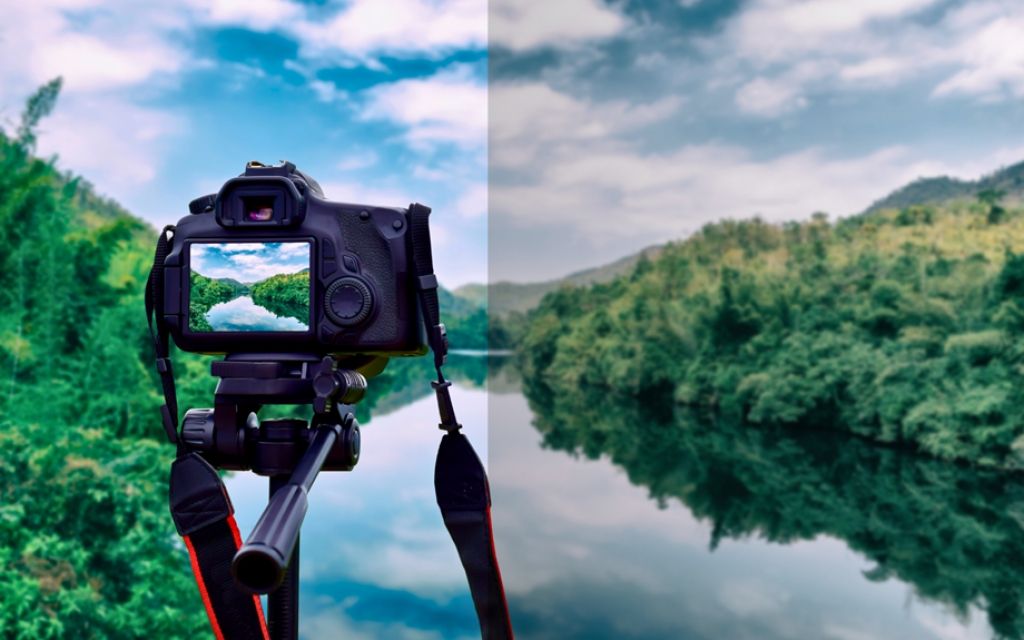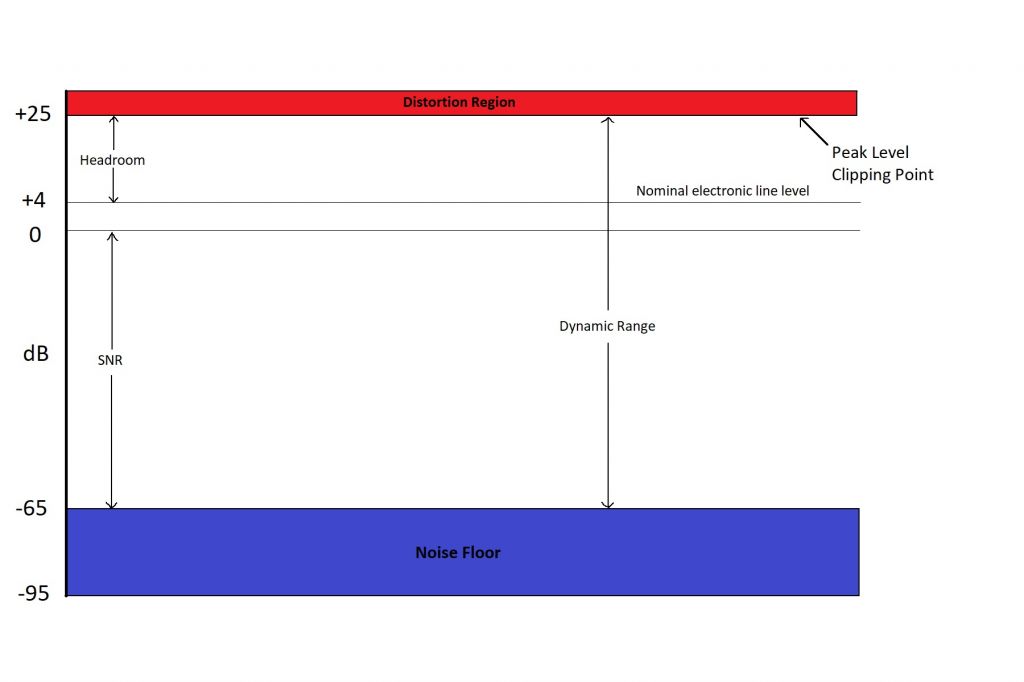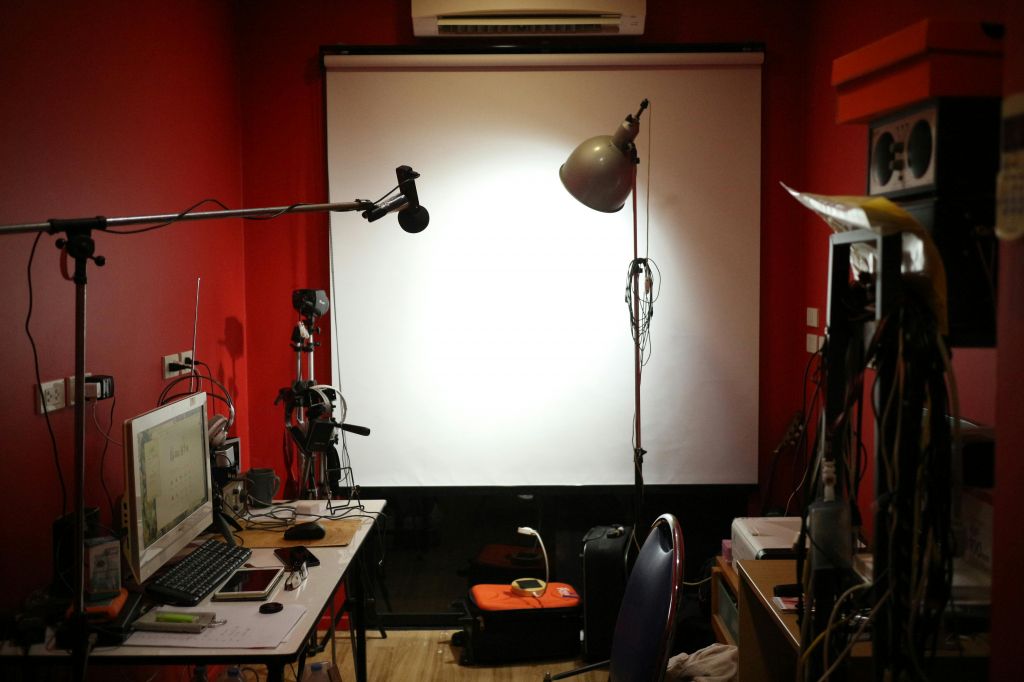What Is Dynamic Range (DR)? Why Is It Important?
Understanding dynamic range helps you also understand your audiovisual equipment, including its limits. For example, a camera can only handle so much (or so little) light before it runs into problems.
You’ll need technology and equipment that can handle an impressive range of situations. In this article, we’ll explain the importance of dynamic range across different types of AV tools.

What Is Dynamic Range: Definition
Dynamic range, generally speaking, is the ratio between the minimum and maximum values that a device or signal can process. For example, it’s the breadth of lights and sounds that a camera or microphone reliably captures.
Going beyond this “range” is still possible. However, doing so can lead to distortion that affects a signal’s output. Videos with a higher dynamic range also usually have a higher bitrate.
Here are five contexts in which we use dynamic range:
- In audio systems, where it’s the difference between the quietest and loudest sounds
- In photography, as the range between the brightest highlights and darkest shadows
- In video, where it similarly refers to the difference between bright and dark elements
- In electronics, where sensors and amplifiers handle complicated signals of all kinds
- In the human body, where our eyes and ears adapt to different light and sound levels
Electronic systems struggle to replicate our body’s natural range. For example, modern cameras only have an audio range of 90 decibels. Our ears can comfortably perceive up to 120 decibels; after this point, it gets painful.
Stay updated with the latest AV technology and innovations – join our newsletter today!
Sign up now
What Do We Mean by DR in Photography and Audio Engineering?
Audio and photo equipment use dynamic range to better handle extreme contrasts in sound and light. Here’s a quick rundown of how each field applies dynamic range:
Photography
Camera sensors sometimes need to handle dark shadows and bright skies simultaneously. Your camera requires a high dynamic range to preserve every detail. Cameras typically measure DR in “stops.” The more stops it has, the bigger the range.
For example, smartphone cameras usually have 10-12 stops, while professional equipment can have 18+ stops. Without a good dynamic range, a camera will “crush” an image’s highlights and shadows. Here, the photo’s white or black spots absorb the photo’s details.
Audio Engineering
Audio equipment uses dynamic range to measure how well it can capture certain sounds. If you try to capture sounds beyond this range, they’ll turn out distorted. We calculate this contrast with decibels.
A microphone with a 90 dB range can’t handle loud noises as well as a 120 dB mic. Sounds on a lower-range device will sound compressed. They won’t make the same impact as sounds on a higher-range system.
What Is High Dynamic Range?
High dynamic range (HDR) extends a device’s normal range. The goal is to get the output close to what the human body naturally perceives. For example, HDR photos reveal the detail in an image’s light and dark areas.
HDR is also available on monitors and televisions. These displays can similarly handle a greater range of visual extremes. Their colors are richer, and their shadows have more details. Despite what many believe, HDR doesn’t make an image brighter; it’s about preserving details.
Even a phone camera can shoot HDR video. YouTube and other online streaming services can also easily show high-dynamic-range content. HDR is even a requirement for any 4K display. A 4K screen provides even greater detail, letting the HDR reach its full potential.
Today, many devices automatically add high dynamic range to relevant environments. You can then shoot away, confident that every detail will come through in the final photo or video.
 (Source: https://commons.wikimedia.org/wiki/File:Dynamic_Range_diagram.jpg)
(Source: https://commons.wikimedia.org/wiki/File:Dynamic_Range_diagram.jpg)
How To Calculate Dynamic Range
The simplest way of calculating a device or system’s dynamic range is to examine its maximum and minimum tolerances. A microphone that can handle 15-115 decibels has a 100 dB dynamic range.
However, you may need to convert the range to decibels. Here’s how to check an audio device’s dynamic range:
- Determine the highest possible signal.
- Determine the lowest possible signal.
- Divide the maximum by the minimum.
After dividing the output, use the formula “20*log10(ratio)” to get a decibel result.
Photography needs an extra calculation. To find the number of stops, use “log2(ratio)”. Once you have a result, use “20*log10(stops)” to convert it to decibels.
There are even certain online sites that can test your sound system’s range.

How Does Audiovisual Technology Use Dynamic Range?
Dynamic range is a cornerstone of modern AV equipment. Anyone working with video, audio, or both relies on it for a clear, crisp output. Here are the main ways people run into dynamic range while working with AV tools:
- Cinematography: DR helps you shoot high-contrast scenes, including ones set at night. You can use it to capture footage anytime without losing a single detail.
- Music mixing: When mixing music, it’s vital to get the song’s full range of sounds. A low dynamic range would make parts of the song unhearable.
- Security cameras: These cameras are usually most effective at night. A strong dynamic range ensures they can still see well in a dark environment.
- Hearing aids: Hearing aids and similar implants must replicate human hearing as well as possible. A good dynamic range lets them more easily hear human speech.
- Virtual reality: VR builds an immersive 3D environment with clear contrasts between its bright and dark scenes. The higher the range, the more accurate the graphics.
- Podcasts: Podcast editors adjust the show’s dynamic range to ensure speakers are close to the same volume. Otherwise, one might be too loud for listeners.
- Projectors: A presentation needs a good dynamic range for each slide to pop. HDR can make sure your meetings have suitable brightness in any room.
 |
 |
| DVP991 Multiviewer | DMX302x Matrix Switcher |
Final Thoughts
With a healthy dynamic range, photos, videos, and audio files remain high-quality in any setting. If you’re a photographer, you should consider shooting in HDR where appropriate.
High-contrast settings were once the bane of anyone needing a clear image. Now, shadows and highlights will still stand out nicely. If you use modern commercial AV equipment, you should have a suitable dynamic range.